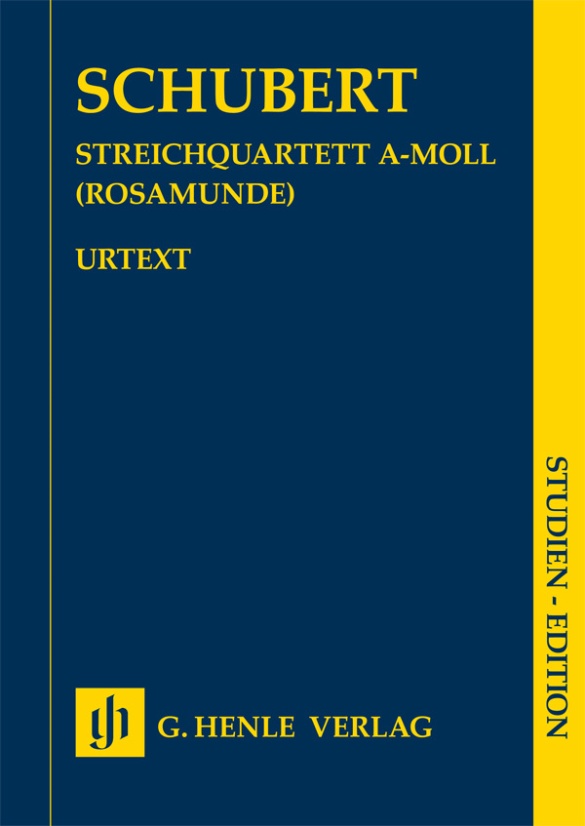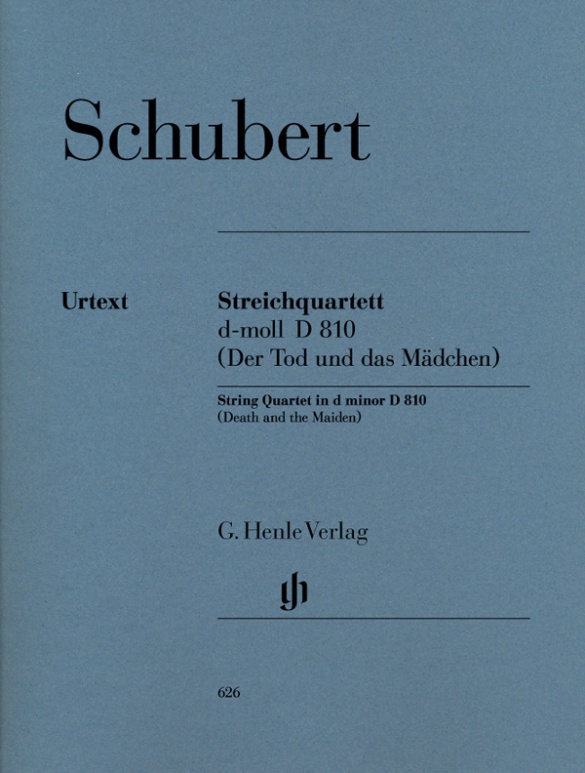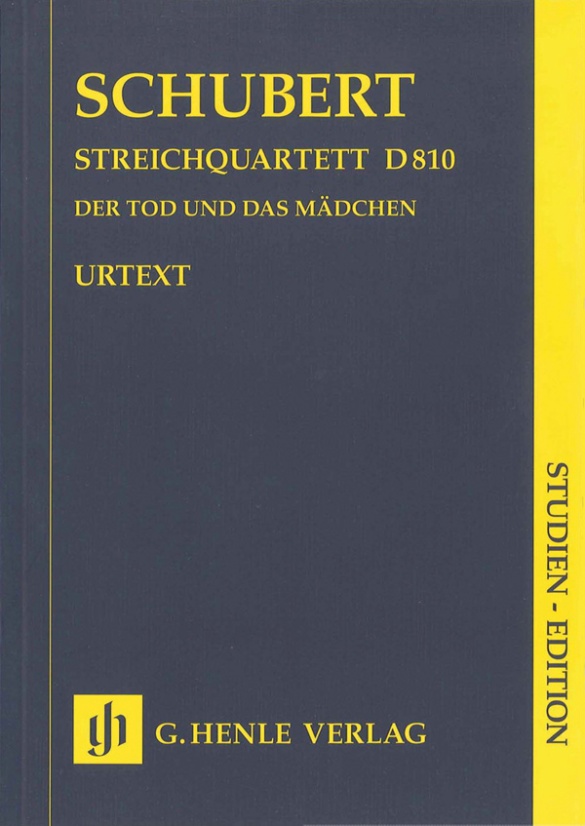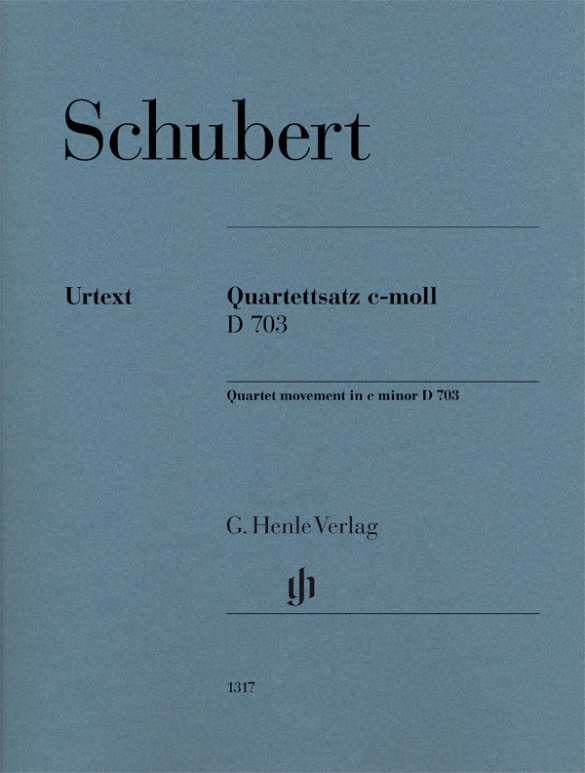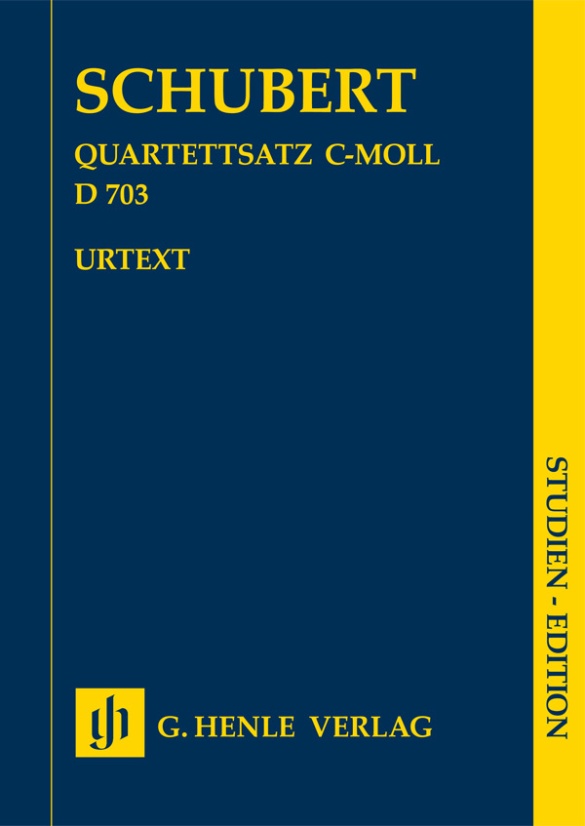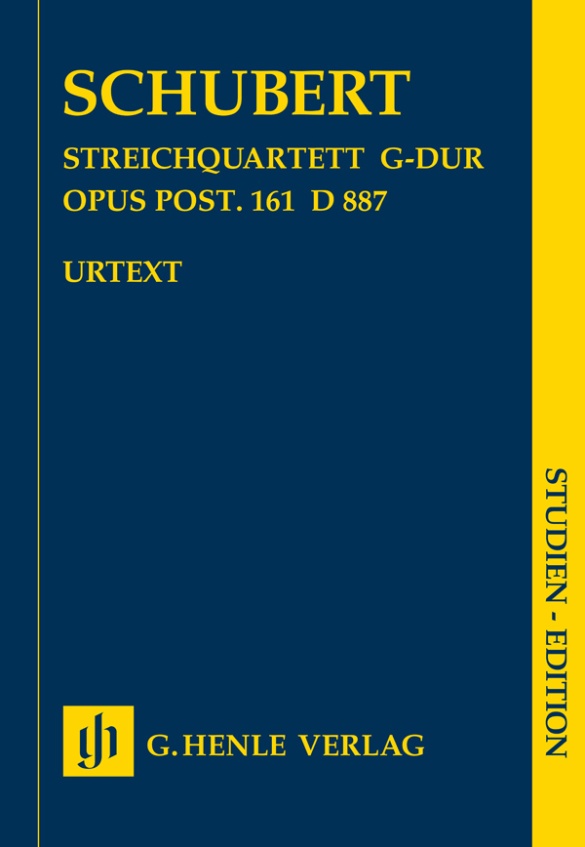Franz Schubert
String Quartet a minor op. 29 D 804 (Rosamunde)
The quartet in a minor is one of the chamber music works with which Schubert wanted to “pave the way to the great symphony” in spring 1824. At the same time he was paving his way to a wider audience, as the “Rosamunde” Quartet was the first and only string quartet that was not only publicly performed in Schubert’s lifetime but also published in parts. It is fortunate for us that this was the case because the autograph of this much-loved quartet is missing today and the only source for the work is the first edition. And this is precisely where the challenge lies, as the parts exhibit some inaccuracies regarding the articulation and dynamics. They have had to be carefully resolved, something which our new Urtext edition has done in an exemplary fashion. Its name can be traced back to Schubert’s incidental music to the play Rosamunde, which can be heard at the beginning of the Andante. Quite a few people might, however, be reminded of the Impromptu in B flat major op. post. 142 no. 3, in which Schubert later once again took up the beautiful melody. Read more about this edition in the Henle Blog.
内容/詳細
作曲家について
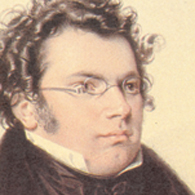
Franz Schubert
He is not only the inaugurator of the art song and its most important composer in the nineteenth century, but he also realized a compositional concept in his instrumental works that opposed Viennese Classicism. Underlying the “heavenly length” of his works is a configuration of time that does not function according to the principle of motivic development, but addresses the notion of lingering; modifications occur mostly not in continuous unfolding, but through sudden eruptions. His ornate songs contradict the ideal of simplicity in the Lied aesthetics of his time, and provide the basis for the art song of the nineteenth century, regarded as they were as exemplary by subsequent generations of composers; they are defined by complex harmonies, an integration of the idioms of instrumental music, semantic models, and a new relationship between text and music in which the poem as a whole is interpreted through the composition, rather than just through word painting. His immense oeuvre in spite of his brief life comprises 600 songs, including his two famous song cycles; seven complete and several unfinished symphonies (including the “Unfinished” in B minor); other orchestral works; numerous pieces of chamber music; fourteen complete and several unfinished piano sonatas as well as other piano pieces; dances for piano and four-hand works; six masses and other sacred compositions; numerous pieces for choir or vocal ensemble, especially for male voices. Although he also contributed to every genre of music theater and his friends predicted a career for him in opera, only two of his ten finished operas were performed during his lifetime, as was the incidental music to “Rosamunde.”
校訂者や運指担当者について
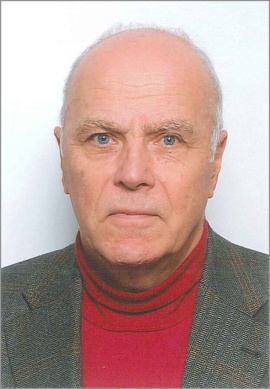
Egon Voss (校訂)
In 1969 Voss became a scholar at the Richard Wagner Complete Edition in Munich, since 1981 he has been its Head. From 1989 to 1990 he was the dramaturg at the Théȃtre la Monnaie/de Munt Brüssel, and from 1996 to 2002 a lecturer at the post-graduate programme “Textkritik” at the Ludwig-Maximilians-Universität in Munich. Voss is a member of the advisory board for the edition “Richard Wagner, Sämtliche Briefe” as well as the journals “wagnerspectrum” and “The Wagner Journal”. He has published
製品安全に関する情報
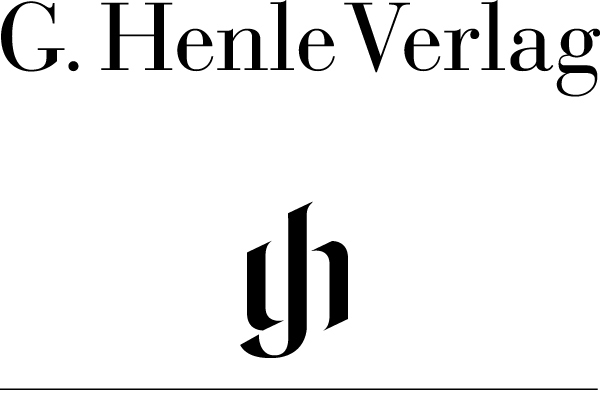
G. Henle Verlag
製品の製造元に関する情報はこちらでご覧いただけます。G. Henle Verlag
Forstenrieder Allee 122
81476 München
info@henle.de
www.henle.com
Thus, with clarifications not always possible, perceptive comments and footnotes in this edition at least provide performers with food for thought. Circumspection remains with regard to additions and alterations. Therefore editor Egon Voss has carefully preserved differences in dynamics, articulation, and ambiguous markings that exist between similar passages. Henle`s meticulously researched and unfettered printing of this landmark work will be welcomed by quartets everywhere. As always, layout and ease of page-turns are exemplary.
Strings Magazine, 2018Schuberts a-Moll-Quartett („Rosamunde“) liegt hier in einer Neuausgabe vor, die vor allem hinsichtlich der gelegentlichen Uneinheitlichkeit von dynamischen Angaben, Legato-Bögen und Differenzen bei Parallelstellen besonders vorsichtig verfährt (und Zweifelsfälle in einer Fußnote anzeigt).
ESTA-Nachrichten, 2019おすすめ
autogenerated_cross_selling
このタイトルを含む他の版
このタイトルを含む他の版


